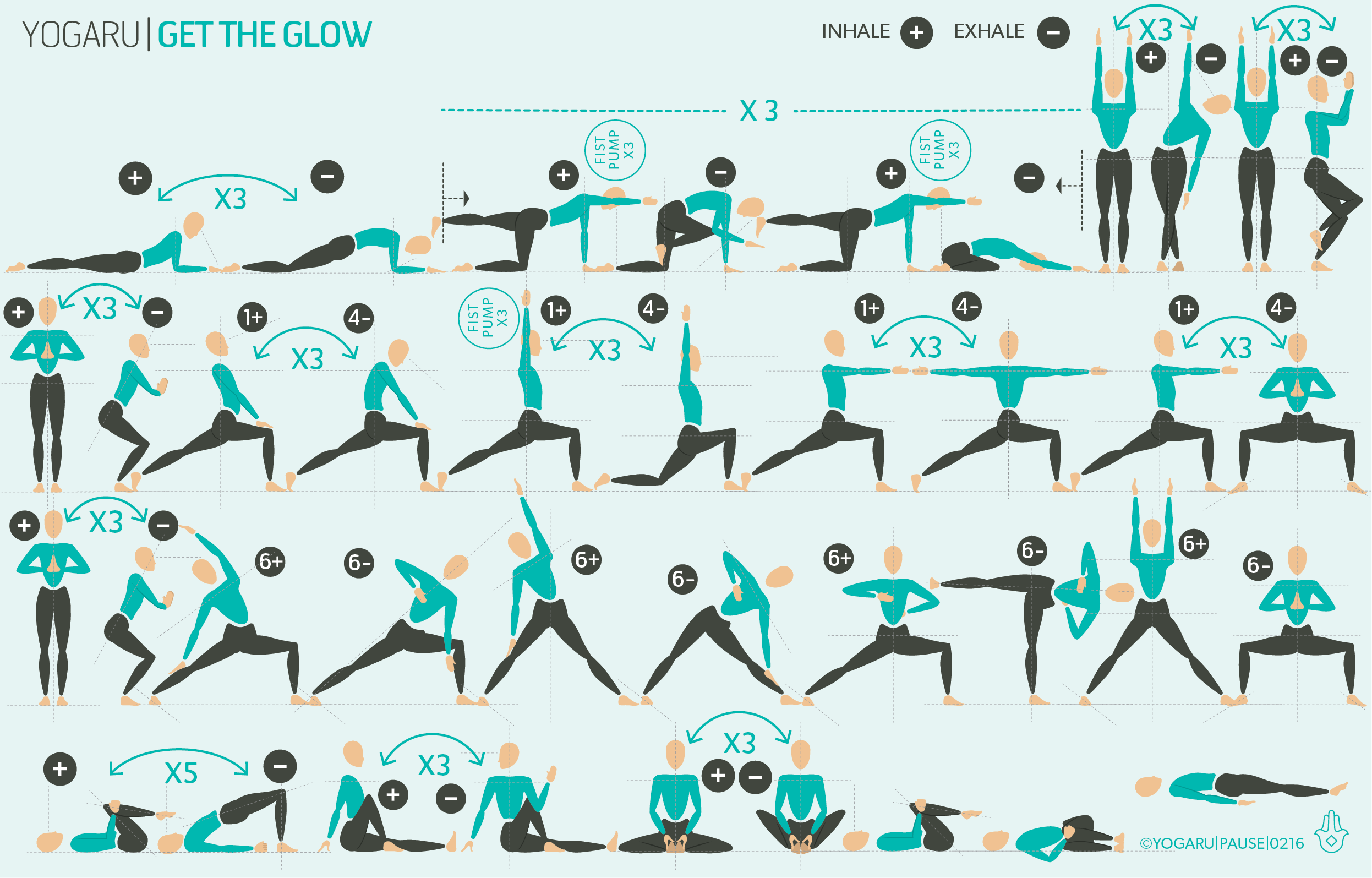GLOW FROM THE INSIDE OUT
There’s a kind of radiance no serum can replicate – a soft, natural luminosity that settles into your cheeks after a deeply nourishing yoga practice. We’re taught that glowing skin begins on the surface: exfoliate, hydrate, protect. But the yoga glow is different. It rises from within.
It comes from increased circulation, deep internal hydration, supple fascia, a soothed nervous system, and the quiet steadiness of breath that reminds your whole body it is safe to soften.
When I used to train yoga teachers, I saw this transformation unfold again and again in the students. By the time we reached the second module, something had shifted. There was a new serenity in their eyes and a brightness in their complexions – a kind of inner contentment you can’t fake. The regular yoga practice required for the training revealed what we fondly call the yoga glow.
HOW YOGA MAKES YOU GLOW
Circulation that feeds your skin – As circulation improves, fresh oxygen and nutrients nourish the skin, creating a vibrant, healthy tone. A warm, rhythmic practice with slow standing flows, gentle twists, backbends, and inversions awakens that rosy, post-yoga radiance.
Lymphatic flow that depuffs and lifts – The lymphatic system, the body’s internal cleanup crew, clears cellular waste, reduces puffiness, and supports a more sculpted, luminous look. It thrives on movement, breath, subtle pressure changes, diaphragmatic breathing, self-massage, and light tapping – all woven naturally into mindful flow.
Hydrated fascia for supple, radiant skin – Hydrated fascia, the body’s connective tissue network, allows smooth, graceful movement and contributes to skin that feels soft, plump, and supple. Slow, wave-like stretches rehydrate these tissues, restoring both elasticity and fluidity.
Nervous system calm that brightens complexion – Stress hormones like cortisol can dull the skin and disrupt collagen repair. Yoga practices that calm the nervous system – like hip and shoulder openers, long exhales, softening jaw and facial muscles – help your natural radiance re-emerge.
Breath that clears and clarifies – Deep, expansive breathing boosts oxygenation, improves clarity, and relaxes tension patterns that dim the face – revealing natural radiance. Twists, backbends, and side bends create more space for the lungs to expand, while a breath-led flowing practice amplifies the multifaceted benefits of full, nourishing breath.
Move with awareness – breathing deeply, lengthening, twisting, pausing – and something shifts. Blood flows freely, lymph drains, muscles release, and the face softens. You feel it first as warm tingling aliveness. Then you see it – bright eyes, flushed cheeks, a brightness that stays with you long after class.
The true yoga glow isn’t just about appearance. It’s the reflection of balance, presence, and vitality – a radiance that moves with you into the rest of your life.
The yoga glow formula: circulation + lymphatics + hydration + destress + breath.
EXPLORING GET THE GLOW IN YOUR PRACTICE
This sequence starts low down to the ground and gradually lifts up to standing. From the start you will link breath with movement and increase the length of the breath throughout as indicated by the sequence. Focus on lengthening the spine in the poses before each side bends and back ends. In your standing flows press into your feet to power up the legs and get the blood and lymph flowing. Remember to soften your expression as you breath and flow.
This sequence is sprinkled with lots of twists, side and backbends, hip and shoulder opening, and simple pranayama breath techniques. To incorporate more circulation techniques – pump your fists three times when you see ‘fist pump’ in the standing flow section of the sequence and add some gentle chest tapping at the start of each standing flow. To do this make a fist and gently tap around the clavicle and chest area.
The second and third rows are your two standing flows. Go through each of them with the right leg forward first and then the left leg forward. For a longer practice you can repeat these flows as often as you’d like.
ALIGNMENT CUES
Have a read of the tips below and either print out the sequence or save it onto your device:
Move slowly to capture all the opportunities to strengthen the muscles. Inhale is indicated with a ‘+’, exhale is a ‘-”.
Move slowly through your transitions using the breath count suggestion in the sequence.
Start each standing flow with some gentle chest tapping.
Press into your feet to activate the muscles of your legs.
Repeat the two standing flows for two or three rounds per side, stepping right leg forward first then left leg.
Give yourself at least 5 mins in Savasana to transition back into your day.
To save the images for personal use click and hold down the image until the ‘save image’ option appears; on Mac hold down ‘control’ and click the image to get the option box; on PC right click on the image to get the option box. Scroll down in the ‘option box’ and click ‘save image’.
Ruth Delahunty Yogaru




